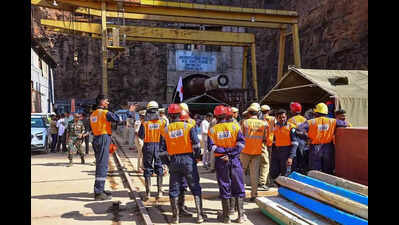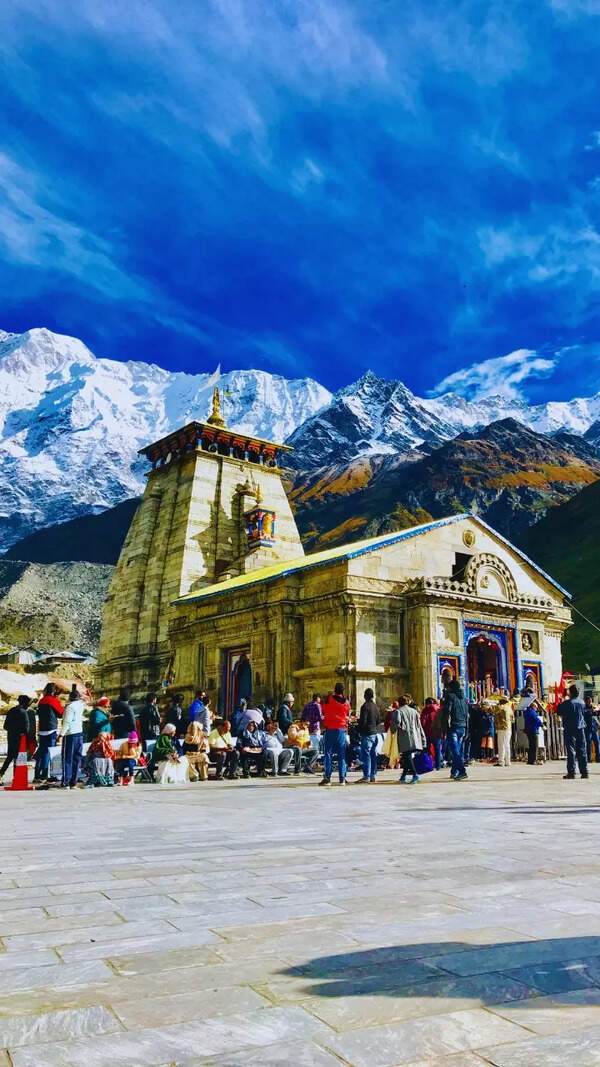- News
- SLBC project faces setbacks as fractured zone, water infiltration slow progress
SLBC project faces setbacks as fractured zone, water infiltration slow progress
Hyderabad: The Srisailam Left Bank Canal (SLBC) tunnel, a crucial component of the Alimineti Madhava Reddy Project (AMRP), has been severely delayed due to its challenging location in a geologically fractured zone and groundwater aquifer area.
These geological issues have led to significant setbacks, including the recent collapse of the tunnel roof, which underscores the complexities involved in tunnelling through such unstable terrain. There are now concerns that the latest accident in which eight workers have been trapped in mounds of rubble since Saturday may further delay the project.
Hydro project experts said these obstacles are not unique to the project, with similar challenges encountered during the Kaleshwaram Lift Irrigation Project (KLIP). Work on AMRP began in 1983 with the aim of providing water to the dry regions of Nalgonda district. It was also meant to supply drinking water to the district's fluoride-affected villages.
Vikram Singh Chauhan, CEO of Max Infra (I) Private Ltd, who has worked on tunnelling and hydro-electric projects across the country, had visited the SLBC tunnel in 2018 on the request of the Telangana govt. "I noticed water oozing out inside the tunnel when I visited it, around 20 km from the tunnel's mouth. These zones are prone to collapse due to the oozing and pressure from above," Chauhan told TOI.
Chauhan pointed to the difference between the SLBC and Kaleshwaram tunnelling. In the case of Kaleshwaram, certain sections were open to the sky, which posed a different set of challenges. However, the SLBC project has faced complications specifically at the tunnelling section itself.
Design challenges
Irrigation officials have further pointed out that the SLBC tunnel faces unique operational challenges due to its design. Typically, entry and exit points for tunnelling are spaced every 5 km, but for the SLBC, there is only one inlet and outlet point. This limitation complicates the execution of the project and delays rescue operations. "Entry and exit points were not allowed in between the 40 km tunnel due to the presence of the Amrabad Tiger Reserve area," explained an engineer-in-chief involved in the project.
The tests conducted by the department and executing agency revealed that water was flowing into the tunnel at a rate of 3,000 litres per minute, which later increased to 3,600 litres per minute. To address this, cement and concrete grouting were done inside the tunnel before the project could proceed further.
‘Not govt failure'
Sridhar Deshpande, former chief engineer of the irrigation department, acknowledged the difficulties posed by the fragile and fractured zone. "It took 10 years to complete just 10 km of tunnelling, meaning only one kilometre per year. This is not a failure of the govt or anyone involved, but a reflection of the sensitive nature of the zone that requires extreme care in execution," Deshpande explained.
The project has faced multiple delays, from challenges in securing machinery to the disruptions caused by the Covid-19 pandemic and these hurdles have further extended the timeline, making it evident that the SLBC tunnel project is a complex and ongoing endeavour, a hydro projects expert said.
End of Article
FOLLOW US ON SOCIAL MEDIA










